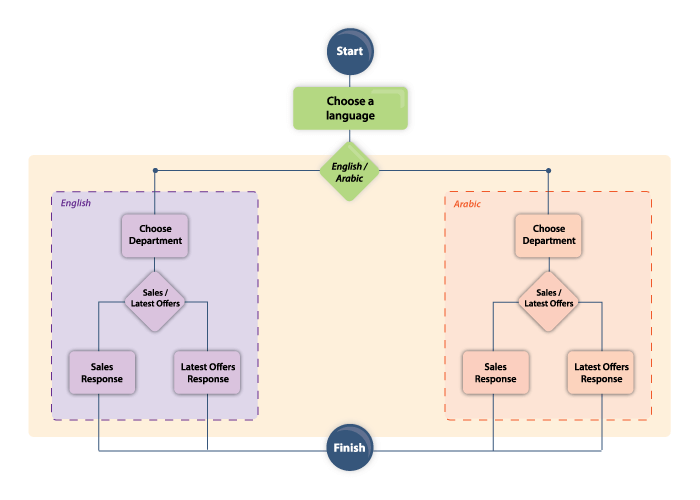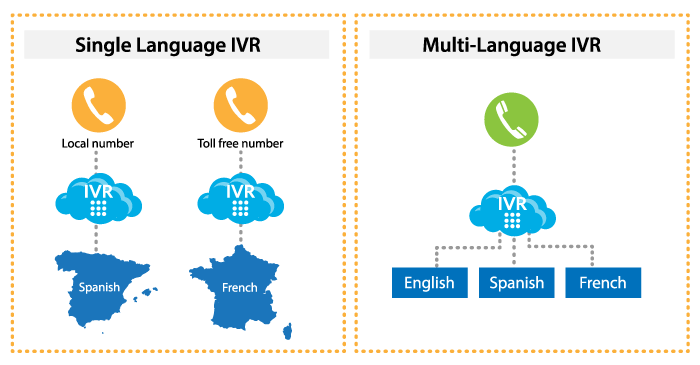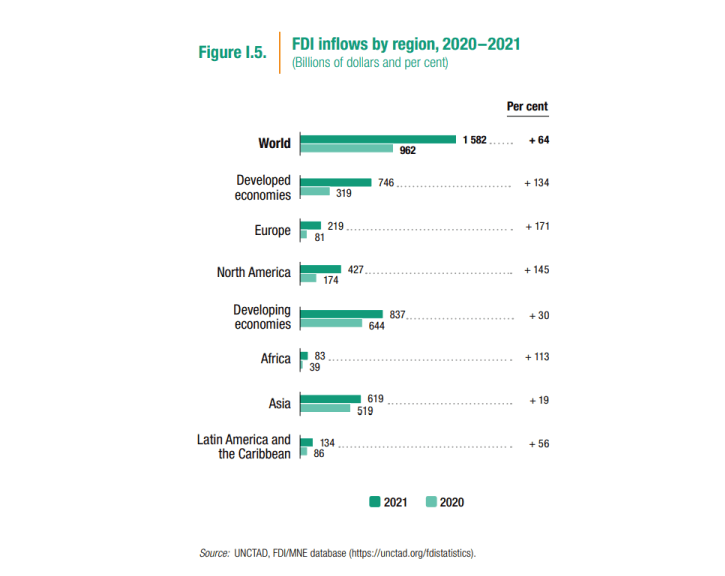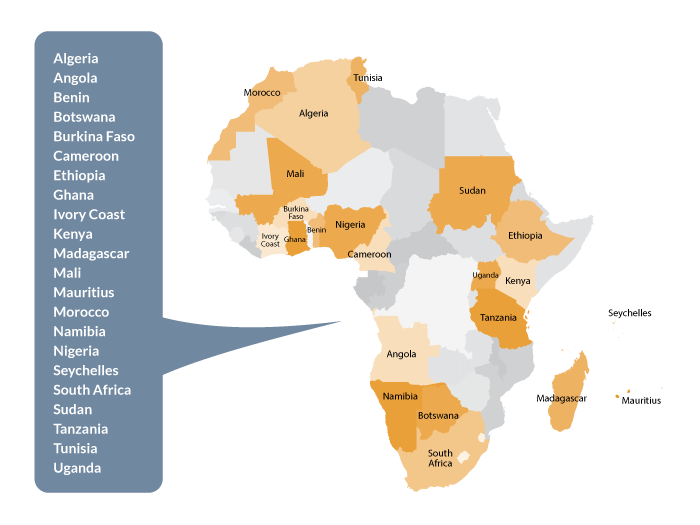Today’s most competitive businesses aren’t just thinking local — they’re building for global. From APAC to the Middle East and Africa, the opportunity to scale customer support and sales reach across borders has never been greater. Advanced technology makes it easier than ever to expand your business internationally without increasing overhead costs. And with the rise in cost-effective telecom solutions, businesses are able to enter markets where numbers and phone services are generally harder to get.
But international expansion comes with communication challenges that traditional phone providers often aren’t equipped to solve.
That’s where global telephony providers like Global Call Forwarding come into the picture. We can help you add global coverage to your business phone system with international phone numbers and advanced call features. See how you can extend coverage into niche and hard-to-reach regions — without requiring a complete system overhaul with us.
- Increasing Global Phone Coverage
- Using Global Call Forwarding with Other Providers
- Adding Global Coverage with Global Call Forwarding
- Integrate with the Tools You Already Use
Building a Global Communication System
Global telephony providers offer cloud communication solutions such as voice, messaging, phone numbers, and call management tools. And since these services work over the internet, businesses can use them to communicate with customers in different countries and regions worldwide.
In most cases, your business does not even need to open a new office or physical location in these countries. You simply forward calls internationally or communicate via web apps.
So, how do you add global voice coverage to your business phone system without dramatically increasing overhead costs?
- Purchase international phone numbers for target countries.
- Work closely with your phone service provider to manage phone service in hard-to-reach countries.
- Set up international call forwarding to have incoming calls routed to the right department and office anywhere in the world.
- Use outbound calling with caller ID management when making outgoing calls to customers in target countries.
Increasing Global Phone Coverage with Global Call Forwarding
While many providers limit their phone number availability to North America and Western Europe, the most dynamic growth is often happening elsewhere — in regions like Latin America, APAC, and Africa. These regions present unique barriers: regulatory complexity, limited Tier 1 carrier access, and stricter documentation requirements.
So, how can your business get around this problem? Work with a global telephony provider that offers high-quality voice service and extensive network of local telecom partners.
Having been in telecom for more than 29 years, Global Call Forwarding has long-term relationships with trusted Tier 1 Carriers worldwide. This allows us to provide our customers with one of the widest offerings available on the market.
New players in this space do not specialize in this area of the telecom industry. So, the numbers they provide may be more limited, come with stricter documentation requirements, or take longer to activate.
Due to our positive reputation in the industry and the trusted relationships built with our providers, we offer our customers phone numbers with fewer documentation requirements than other providers and at competitive rates. And we provide added flexibility with our month-to-month billing and no long-term commitments – which our customers prefer over the strict contracts required by many telecom providers.
Using Our Service with Other Providers
Since some global phone providers have limited coverage and require stricter documentation for most originations, they may be harder to work with. But that does not mean you need to find a new phone service if your communication system is already built with other providers.
You can simply integrate our services and hard-to-reach international numbers with other providers like Zoom Phone, Amazon Connect, Genesys, Webex, MS Teams, and so on. Our team of global communication experts can help you identify and set up the right solutions.
Global Call Forwarding (run by United World Telecom) has an extensive inventory of phone numbers from over 160 countries around the world. And we can provide phone service in hard-to-reach countries as well. So, your business can use our service to add global voice coverage to your existing phone system reliably.
Unlike many global UCaaS providers, our network includes regional relationships and regulatory expertise in:
- Latin America: Countries like Brazil, Argentina, Peru, Colombia
- Middle East & Africa (MEA): UAE, Saudi Arabia, Egypt, Nigeria, Kenya
- Asia-Pacific (APAC): Indonesia, Vietnam, the Philippines, India
View the available countries we offer service for on our Country Coverage page.
Many competitors don’t support these markets — or only offer limited inbound service.
Global Call Forwarding gives you access to toll-free and local numbers with fewer documentation requirements, faster activation, and high-quality call delivery. All backed by long-standing relationships with trusted in-country providers and Tier 1 carriers.
Adding Global Coverage with Global Call Forwarding
Already using a cloud communications or PBX platform like Zoom Phone, MS Teams, Amazon Connect, or Genesys? You don’t need to rip and replace your entire setup.
Global Call Forwarding makes it easy to layer on global coverage using two flexible methods:
1. Add Global Coverage with BYOC
BYOC solutions let you forward calls directly to SIP. This is the best option for businesses that want to add numbers to an existing PBX system and/or have limited minutes. You can simply buy numbers from us and forward calls to your PBX. Here’s how:
- Buy international phone numbers from Global Call Forwarding and activate your service.
- Contact your PBX or phone service provider.
- Give your PBX or phone service provider the list of phone numbers and our list of IP addresses. They must whitelist these so you can receive calls.
- Your PBX provider will then create a special SIP domain for each number
- Add this SIP domain in your control panel under Forward all calls to, so we can forward calls to the right domains.
This way, we’ll route calls directly to your PBX via SIP and your business can use your own infrastructure while leveraging our global reach.
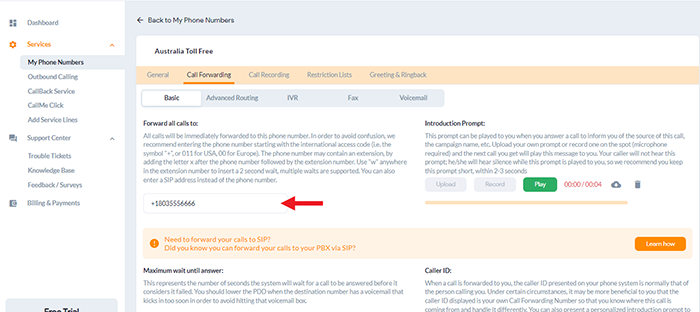
2. Add Global Coverage by Forwarding Directly to Your Existing Number
Need a simpler option? You can purchase global phone numbers from Global Call Forwarding and forward calls to an existing local number or call center line. No SIP integration or whitelisting required.
This is the best option if you have an unmetered plan with your local phone number provider. And you avoid the hassle of dealing with SIP domains and whitelisting IP addresses. You can do this on our Pricing page.
Integrate with the Tools You Already Use
Whether you’re using a contact center platform, CRM, helpdesk, or voice AI tool, our services are designed to integrate seamlessly.
- CRMs: Salesforce, Zoho, HubSpot, Pipedrive
- Help Desk Software: Zendesk, Freshdesk, Intercom
- Voice platforms: Genesys, Amazon Connect, MS Teams, Zoom Phone
This lets your team deliver more personalized, responsive customer interactions — no matter where your customers are.
Challenges to Keep in Mind
Most global phone service providers offer international phone numbers and various cloud communication features. But, they may come with limitations that can impede your business’ global expansion plans:
Limited global coverage
Worldwide coverage is typically limited to just Western Europe and the Americas. This means that providers may not have a strong presence in the Middle East, Latin America, or Africa. So, if you have customers in these regions or want to expand, you will need an additional phone service provider.
For instance: Zoom Phone offers phone numbers in 45 countries and toll-free service in only 29 countries (of which some are inbound-only). You can get around this with a Zoom Phone BYOC solution.
Amazon Connect offers phone numbers and inbound calling from about 80 countries, DID and toll-free numbers in nearly 20 countries, and outbound calling for 200 countries.
Stricter documentation
Additionally, new players in the telecom space may require stricter documentation for most originations. This could be a result of short-term experience, smaller networks, different business models, and so on. But it can add more roadblocks to your international expansion plans.
Note: Information mentioned in this article is accurate at the time of publishing and may be subject to changes.
Why Choose Global Call Forwarding as Your Global Phone Service Provider?
While there are countless global inbound phone services available, you need one that works best for your business communication needs. Global Call Forwarding has helped thousands of companies expand globally — from high-growth startups to multinational enterprises.
- Coverage in 160+ countries (including hard-to-reach regions)
- Local, national, and toll-free numbers available
- Advanced routing features and real-time analytics
- Flexible month-to-month pricing
- Support for BYOC and SIP delivery
- Dedicated account managers and 24/7 technical support
Ready to add global voice coverage to your phone system? Call us at +1 (561) 908-6171 or chat with our experts online!















